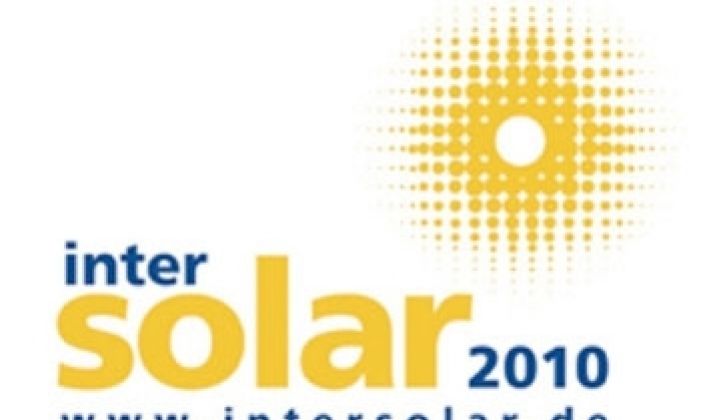It's that time of year again. The world's largest solar trade fair kicked off in Munich this Monday with a day-long conference centered around developments in key markets, namely Germany, Italy, France, the U.K. (whose place on this list is questionable), the U.S., and perhaps most interestingly, India. What follows is a sampling of data and chatter that we were able to glean from participants and speakers.
Germany
The average annual system price in 2009 was EUR 3.135/W, which, at an exchange rate of 1.35, amounts to around $4.20/W. For the first quarter of 2010, this dropped by 8% to EUR 2.864/W for systems less than 100 kW.
Market segmentation of German installations in 2009:
* <1% BIPV
* 12% in the 1-10 kW range
* 54% from 10-100 kW
* 14% > 100 kW
* 19% ground-mount
63,427 jobs were created in the German PV industry in 2009.
Italy
The government is contemplating a 23% reduction in the feed-in tariff for 2011. The reduction is likely to proceed in increments. At this time, only a draft version of the measure is circulating in Parliament.
Decree 387/2003 attempts to establish national guidelines to target harmonization of the regional authorization processes to alleviate the well-known regulatory and permitting issues in getting Italian systems online. These guidelines are expected to be approved in the next regional conference held later this month. However, regional authorities will still have the final say.
France
Cumulative installed capacity stands at 349 MW, of which 271 MW is in continental France and 78 MW in Corsica and overseas territories. This translates into:
* 45% < 3 kW
* 45% in the 3-100 kW range
* 10% > 1 MW
The system size mix is expected to change going forward, since ground-mounted systems only began to be installed beginning in the second half of 2009.
As expected, PV is developing in the south and west regions.
As of March 2010, there was a waiting list of 3,992 MW of applications, with a significant jump starting in Q2 2009.
The national feed-in tariff differentiates between "strong" BIPV, where the modules that can ensure exactly the same function as roofing tiles, and "light" BIPV that (as this writer understood it) is more akin to a Uni-Solar-style laminate. As expected, the former receives a higher tariff.
India
A local content requirement is expected to be implemented for crystalline silicon PV for Phase 1 (target of 1 GW grid-connected deployment) of the National Solar Mission (India's solar deployment initiative). It is likely that this will take the form of requiring modules to be assembled domestically. Less is known about the evolution of this going forward -- some suggested it would be removed, but discussions with Indian developers revealed fears that this might be toughened to include cells and/or other components.
More gleanings as we get them.



